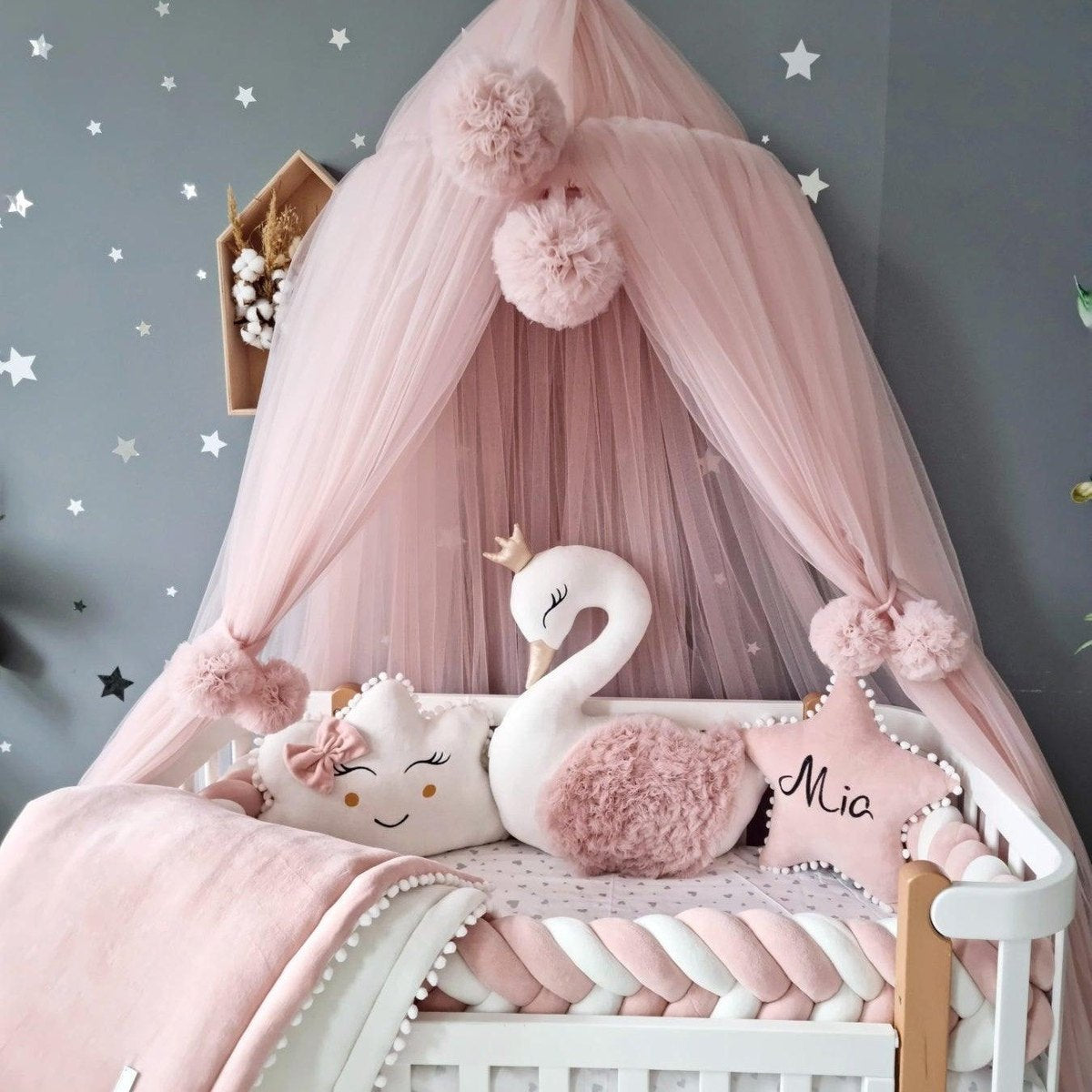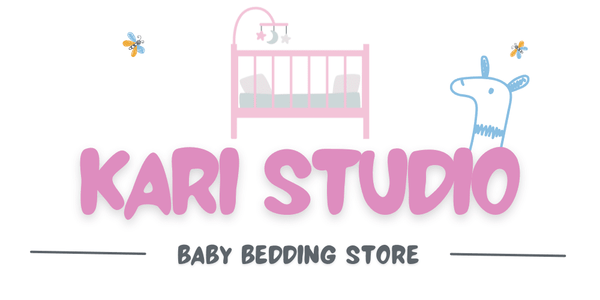Babybettwäsche aufzubewahren, scheint so einfach zu sein wie das Falten und Stapeln einiger Decken im Schrank. Die meisten Eltern sind überrascht, dass unsachgemäße Lagerung empfindliche Stoffe ruinieren und dauerhafte Schäden verursachen kann, bevor ihr Baby sie überhaupt wieder benutzen kann. Eine gute Nachricht für Sie: Schon eine winzige Menge Restfeuchtigkeit kann Schimmel bilden, der ein ganzes Set innerhalb weniger Wochen ruiniert. Mit ein paar geschickten Maßnahmen können Sie die winzigen Laken jedoch frisch, sicher und bereit für jedes nächste Nickerchen halten.
Inhaltsverzeichnis
- Schritt 1: Bewerten Sie Ihre Babybettwäsche-Kollektion
- Schritt 2: Wählen Sie geeignete Speicherlösungen
- Schritt 3: Bettwäsche reinigen und für die Lagerung vorbereiten
- Schritt 4: Bettwäsche nach Art und Größe sortieren
- Schritt 5: Beschriften Sie die Vorratsbehälter für einen einfachen Zugriff
- Schritt 6: Überprüfen Sie den Zustand der gelagerten Bettwäsche
Kurze Zusammenfassung
| Kernpunkt | Erläuterung |
|---|---|
| 1. Bewerten Sie Ihre Babybettwäsche-Kollektion | Sammeln Sie alle Bettwaren, um ihren Zustand zu beurteilen, und kategorisieren Sie sie für eine effiziente Lagerung. |
| 2. Wählen Sie hochwertige Speicherlösungen | Verwenden Sie robuste, luftdichte Behälter, um die Wäsche vor Feuchtigkeit, Staub und Schädlingen zu schützen und gleichzeitig die Zugänglichkeit zu gewährleisten. |
| 3. Bettzeug vor der Einlagerung gründlich reinigen | Waschen und trocknen Sie alle Artikel gründlich, um Stoffschäden und Gerüche zu vermeiden, bevor Sie sie einlagern. |
| 4. Nach Typ und Größe sortieren | Sortieren Sie die Bettwäsche nach Größe und Funktion in Kategorien, um die Suche zu vereinfachen, wenn sich Ihre Anforderungen ändern. |
| 5. Beschriften Sie Behälter für einfachen Zugriff | Verwenden Sie klare, haltbare Etiketten zur Kennzeichnung des Inhalts, um eine schnelle Wiederauffindung und Wartung des Speichersystems zu gewährleisten. |
Schritt 1: Bewerten Sie Ihre Babybettwäsche-Kollektion
Um Babybettwäsche effektiv aufzubewahren, ist der erste wichtige Schritt die sorgfältige Prüfung Ihrer aktuellen Sammlung. Diese erste Phase legt den Grundstein für die richtige Organisation und Erhaltung der wertvollen Textilien Ihres Babys. Bevor Sie sich mit Aufbewahrungslösungen befassen, sollten Sie sich umfassend über Ihren aktuellen Bettbestand informieren.
Sammeln Sie zunächst alle Babybettwäschestücke aus verschiedenen Bereichen Ihres Zuhauses. Suchen Sie nach Artikeln aus Kinderzimmerschränken, Lagerbehältern, Waschküchen und anderen Orten, an denen Wäsche verstreut sein könnte. Breiten Sie alles auf einer sauberen, ebenen Fläche aus, zum Beispiel einem großen Tisch oder einem frisch gemachten Bett. Diese visuelle Bestandsaufnahme ermöglicht Ihnen einen genauen Überblick über Ihren Bestand und ermöglicht Ihnen, den Zustand jedes einzelnen Stücks zu beurteilen.
Zu den wichtigsten zu bewertenden Punkten gehören :
- Spannbettlaken für Kinderbetten
- Wickeltücher
- Musselin-Tücher
- Leichte Sommerdecken
- Winterdecken oder Bettdecken
- Matratzenschoner
- Wasserdichte Pads
Achten Sie bei der Überprüfung jedes Artikels auf Abnutzungserscheinungen, Flecken oder Beschädigungen. Überprüfen Sie die elastischen Kanten der Spannbettlaken, achten Sie auf kleine Risse im Stoff und prüfen Sie, ob die wasserdichten Komponenten noch funktionsfähig sind. Manche Bettwäsche muss vor der Langzeitlagerung gewaschen oder leicht repariert werden. Weitere Informationen zur Pflege hochwertiger Textilien finden Sie in unserem Leitfaden zur Auswahl von Babybettwäsche .
Ordnen Sie Ihre Sammlung, indem Sie die Artikel nach Größe, Jahreszeit und Nutzungshäufigkeit kategorisieren. Trennen Sie Neugeborenengrößen von größerer Babybettwäsche und gruppieren Sie die Artikel nach Gewicht und Materialart. Diese erste Sortierung macht die nachfolgende Lagerung wesentlich effizienter.
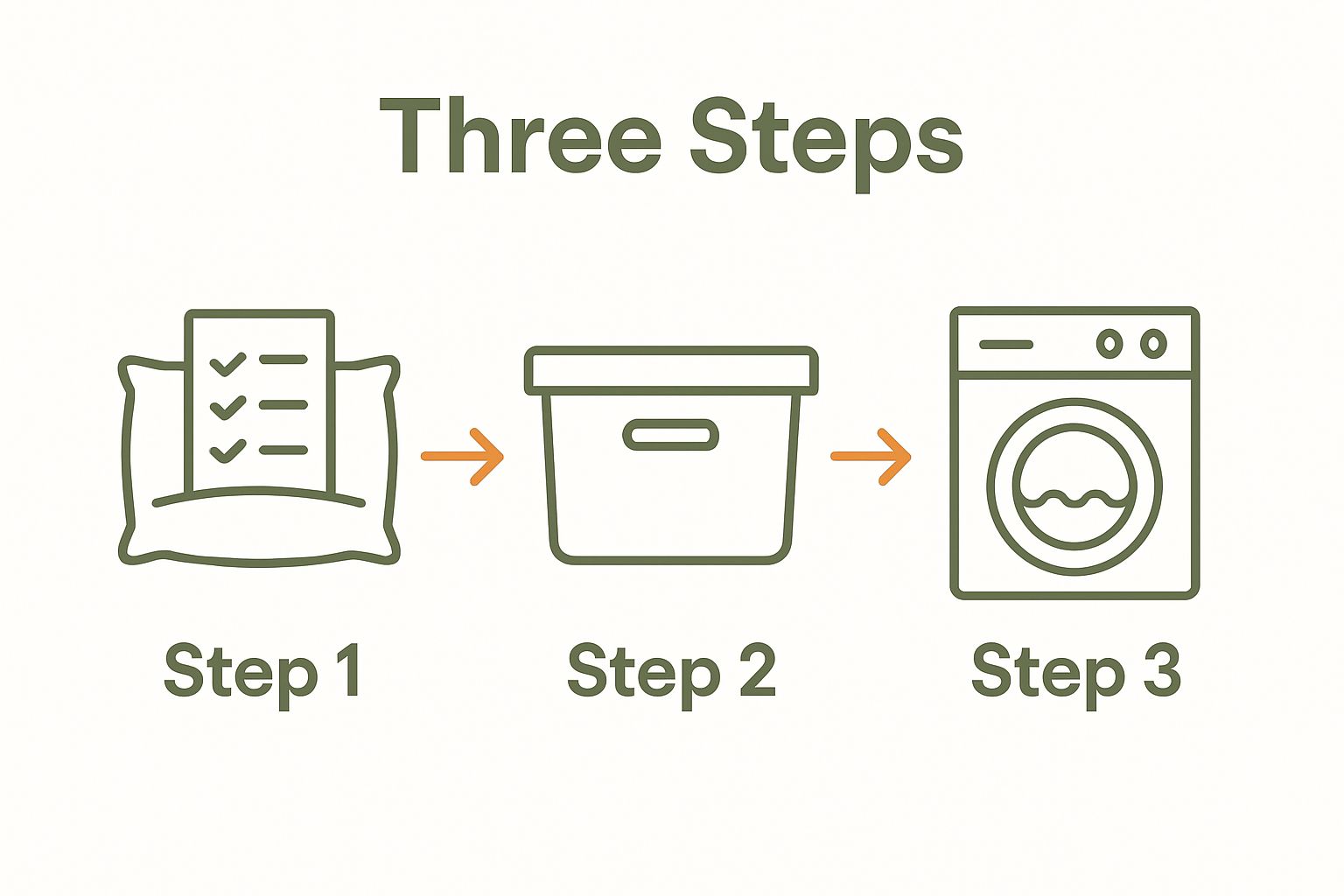 Denken Sie daran, dass richtig kategorisierte Bettwäsche nicht nur Platz spart, sondern Ihnen auch hilft, bestimmte Gegenstände bei Bedarf schnell zu finden.
Denken Sie daran, dass richtig kategorisierte Bettwäsche nicht nur Platz spart, sondern Ihnen auch hilft, bestimmte Gegenstände bei Bedarf schnell zu finden.
Am Ende dieser Bewertung sollten Sie einen klaren, geordneten Überblick über Ihre Babybettwäschesammlung haben und bereit sein, mit der strategischen Aufbewahrungsplanung fortzufahren.
Schritt 2: Wählen Sie geeignete Speicherlösungen
Die Wahl der richtigen Aufbewahrungslösung ist entscheidend für die effektive Aufbewahrung von Babybettwäsche. Ziel ist es, die empfindliche Wäsche vor Feuchtigkeit, Staub, Schädlingen und Umwelteinflüssen zu schützen und sie gleichzeitig leicht zugänglich und ordentlich aufzubewahren.
Investieren Sie in hochwertige Aufbewahrungsbehälter mit verschiedenen Schutzfunktionen. Transparente Kunststoffbehälter mit dicht schließendem Deckel eignen sich besonders gut, da Sie den Inhalt sehen können, ohne die einzelnen Behälter öffnen zu müssen. Achten Sie auf Behälter aus lebensmittelechtem, BPA-freiem Material, die luftdicht verschließen und so Feuchtigkeit und Staubansammlungen verhindern. Erfahren Sie mehr über die Wahl des perfekten Babybettwäsche-Sets und die Textilkonservierung.
Zu den wesentlichen Eigenschaften von Lagerbehältern gehören :
- Stabile, robuste Konstruktion
- Transparentes oder halbtransparentes Design
- Stapelbare Konfiguration
- Sichere Deckelmechanismen
- Passende Größe für verschiedene Bettarten
Die Wahl der Größe ist entscheidend. Kleinere Behälter eignen sich am besten für Gegenstände wie Wickeltücher und leichte Laken, während größere Behälter sperrigere Gegenstände wie Steppdecken und Bettdecken aufnehmen. Vermeiden Sie zu große Behälter, da diese den Stoff unnötig zusammendrücken und Falten bilden können. Erwägen Sie den Kauf von Behältern mit verstellbaren Fächern oder Trennwänden, um Ordnung zu halten und ein Verrutschen der Gegenstände während der Lagerung zu verhindern.
Temperatur- und Feuchtigkeitskontrolle sind entscheidende Faktoren für die Haltbarkeit von Babybettwäsche. Lagern Sie die Behälter an kühlen, trockenen Orten ohne direkte Sonneneinstrahlung, z. B. in Innenschränken oder speziellen Lagerräumen. Vermeiden Sie feuchte Keller oder Dachböden, da Temperaturschwankungen und Feuchtigkeit die Integrität des Stoffes beeinträchtigen können. Wenn Sie in einer besonders feuchten Umgebung leben, sollten Sie Silicagel-Päckchen hinzufügen, um überschüssige Feuchtigkeit zu absorbieren und vor Schimmelbildung zu schützen.
Durch die sorgfältige Auswahl geeigneter Aufbewahrungslösungen schaffen Sie eine schützende Umgebung, die die Qualität und Frische Ihrer Babybettwäsche bewahrt und sicherstellt, dass diese wertvollen Textilien für die zukünftige Verwendung oder Aufbewahrung in makellosem Zustand bleiben.
Hier ist eine Tabelle mit einer Zusammenfassung der wichtigsten Eigenschaften, auf die Sie bei Aufbewahrungsbehältern für Babybettwäsche achten sollten, damit Sie die beste Option für eine effektive Aufbewahrung auswählen können.
| Besonderheit | Beschreibung | Warum es wichtig ist |
|---|---|---|
| Stabile, robuste Konstruktion | Hartplastik oder ähnliche Materialien für die Struktur | Verhindert Quetschungen und schützt empfindliche Bettwäsche |
| Transparentes oder halbtransparentes Design | Transparente Seiten für einfache Sicht auf den Inhalt | Ermöglicht eine schnelle Identifizierung und reduziert den Handhabungsaufwand |
| Stapelbare Konfiguration | Flache Deckel zum Stapeln geeignet | Spart Lagerraum und sorgt für Ordnung |
| Sichere Deckelmechanismen | Dichtschließende Schnapp- oder Klammerverschlüsse | Hält Feuchtigkeit, Staub und Schädlinge fern |
| Passende Größe für den Bettwarentyp | Klein oder groß, je nach Artikelgröße | Reduziert die Kompression, verhindert Falten und bietet Platz für verschiedene Gegenstände |
Schritt 3: Bettwäsche reinigen und für die Lagerung vorbereiten
Die Reinigung und Vorbereitung von Babybettwäsche für die Langzeitlagerung ist ein wichtiger Schritt, um mögliche Stoffschäden zu vermeiden, Bakterienwachstum zu verhindern und sicherzustellen, dass Ihre Bettwäsche frisch und einsatzbereit bleibt. Dieser Vorgang erfordert sorgfältige Detailarbeit und spezielle, auf unterschiedliche Stoffarten abgestimmte Techniken.
Die Waschanleitung hängt vom jeweiligen Material und der Stoffzusammensetzung jedes einzelnen Bettartikels ab. Lesen Sie zunächst die Etiketten des Herstellers sorgfältig durch, um genaue Reinigungshinweise zu erhalten. Baumwollartikel sind in der Regel maschinenwaschbar, während empfindliche Materialien wie Musselin-Wickeltücher eine schonendere Handwäsche erfordern. Erfahren Sie mehr über verschiedene Reinigungsmethoden für Babybettwäsche, um eine optimale Textilpflege zu gewährleisten.
Zu den wesentlichen Vorbereitungsschritten vor der Lagerung gehören :
- Artikel nach Stoffart sortieren
- Überprüfung auf vorhandene Flecken
- Verwendung milder, babysicherer Reinigungsmittel
- Verzicht auf Weichspüler
- Auswahl der geeigneten Wassertemperatur
Achten Sie vor der Lagerung besonders auf die Fleckenentfernung. Organische Flecken durch Babynahrung, Lebensmittel oder Körperflüssigkeiten können sich unbehandelt dauerhaft festsetzen. Verwenden Sie enzymbasierte Fleckenentferner, die speziell für Babytextilien entwickelt wurden. Tragen Sie diese sanft auf und lassen Sie vor dem Waschen ausreichend Zeit einwirken. Wählen Sie beim Waschen in der Maschine den schonendsten Waschgang, der dem Gewicht und der Art des Stoffes entspricht.
Ebenso wichtig sind die Trocknungsmethoden bei der Vorbereitung von Bettwäsche für die Lagerung. Vermeiden Sie hohe Hitze, da diese elastische Komponenten beschädigen und zum Einlaufen des Stoffes führen kann. Das Trocknen auf der Leine oder bei niedrigen Temperaturen im Trockner hilft, die Integrität des Stoffes zu erhalten. Bei Artikeln mit empfindlichen Verzierungen oder komplizierten Designs bietet das Trocknen an der Luft den besten Schutz vor möglichen Schäden.
Stellen Sie vor der Lagerung sicher, dass die gesamte Bettwäsche vollständig trocken ist. Schon geringe Feuchtigkeit kann zu Schimmelbildung und unangenehmen Gerüchen führen. Führen Sie eine abschließende Sicht- und Tastprüfung durch und achten Sie auf verbleibende Flecken, lose Fäden oder mögliche Schwachstellen im Stoff. Ordnungsgemäß gereinigte und vorbereitete Babybettwäsche bleibt frisch und einsatzbereit, sodass diese wertvollen Textilien jahrelang erhalten bleiben.
Schritt 4: Bettwäsche nach Art und Größe sortieren
Das Sortieren von Babybettwäsche nach Art und Größe ist ein strategischer Prozess, der Ihre Aufbewahrungsstrategie von chaotisch zu methodisch macht. Dieser Schritt gewährleistet schnellen Zugriff auf bestimmte Artikel und verhindert unnötige Abnutzung empfindlicher Textilien. Eine durchdachte Organisation ist besonders wichtig, wenn Ihr Baby verschiedene Wachstumsphasen und saisonale Bedürfnisse durchläuft.
Die primären Organisationskategorien sollten die funktionale Vielfalt Ihrer Babybettwäsche widerspiegeln. Beginnen Sie damit, die Artikel nach Hauptzweck und Größenbereich in verschiedene Gruppen einzuteilen. Lesen Sie unseren Leitfaden zur Auswahl von Babybettwäsche, um weitere Einblicke in die Textilklassifizierung zu erhalten.
Zu den wichtigsten Organisationskategorien gehören :
- Artikel in Neugeborenengröße
- Artikel in Kleinkindergröße
- Saisonale Bettwäsche (leichtes Sommerbett, schweres Winterbett)
- Spezialartikel (Wickeltücher, wasserdichte Schichten)
- Textilien für den gelegentlichen Gebrauch
Verwenden Sie für jede Kategorie transparente, beschriftete Aufbewahrungsbehälter. Transparente Boxen mit herausnehmbaren Trennwänden eignen sich besonders gut, da sie den Inhalt sichtbar machen, ohne das gesamte Aufbewahrungssystem zu beeinträchtigen. Stapeln Sie die Behälter, indem Sie schwerere Gegenstände nach unten und leichtere, empfindlichere Gegenstände nach oben legen, um unnötigen Druck zu vermeiden.
Ebenso wichtig ist die Größeneinteilung. Ordnen Sie die Bettwäsche innerhalb jeder Kategorie vom kleinsten zum größten an, sodass eine logische Abfolge entsteht, die das spätere Wiederfinden erleichtert. So sollten beispielsweise Bettlaken für Neugeborene getrennt von Kleinkinderbettwäsche gruppiert werden, mit deutlich sichtbaren oder schriftlichen Etiketten, die die genauen Maße und die empfohlene Altersspanne angeben.
Weitere Organisationsstrategien umfassen das Rollen statt Falten bestimmter Gegenstände wie Wickeltücher und Musselintücher. Das Rollen minimiert dauerhafte Falten und ermöglicht eine kompaktere Aufbewahrung. Verwenden Sie säurefreies Seidenpapier zwischen empfindlichen Gegenständen, um Farbübertragung zu verhindern und die Stoffintegrität zu erhalten. Diese Methode schont nicht nur die Bettwäsche, sondern erleichtert auch die spätere Auswahl und den Wechsel.
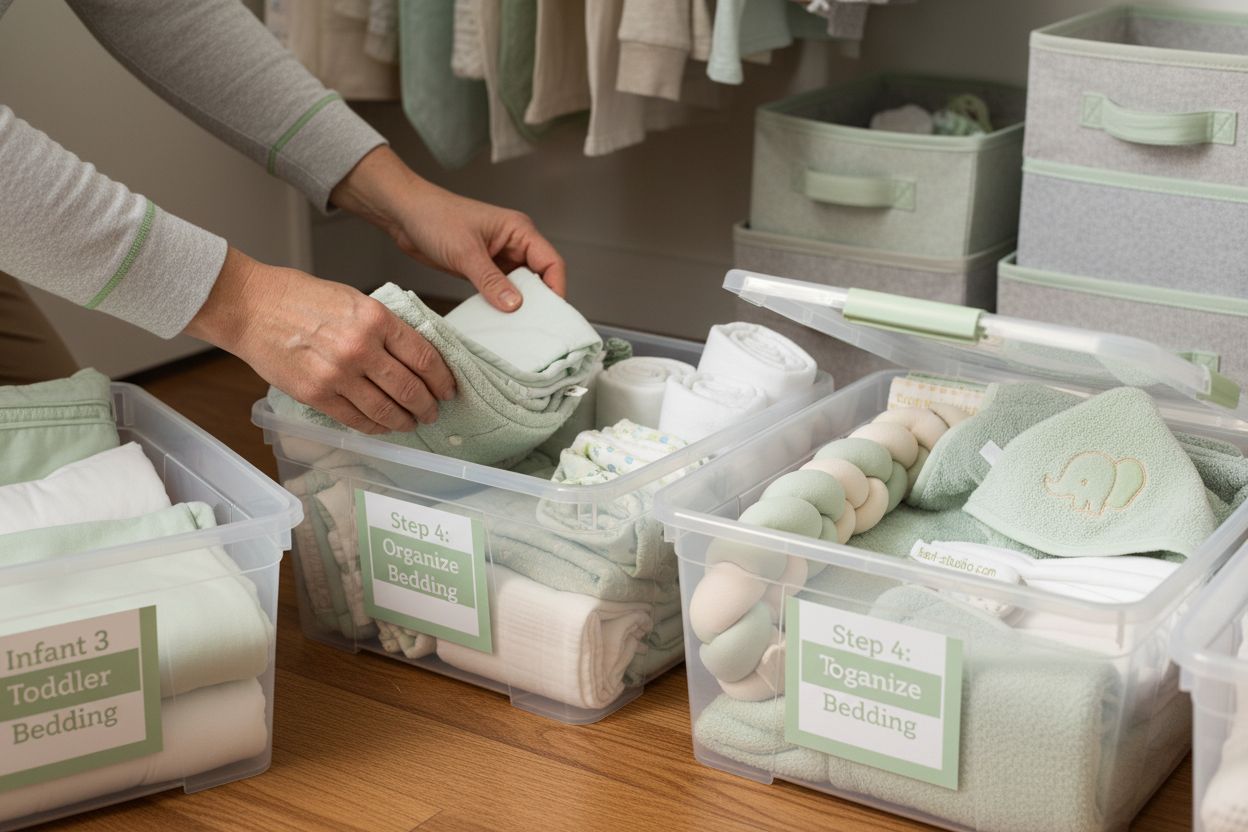
Schritt 5: Beschriften Sie die Vorratsbehälter für einen einfachen Zugriff
Die Beschriftung von Aufbewahrungsbehältern ist der letzte wichtige Schritt bei der Gestaltung eines effizienten Aufbewahrungssystems für Babybettwäsche. Die richtige Beschriftung verwandelt Ihre Organisationsarbeit vom einfachen Sortieren in eine optimierte, benutzerfreundliche Lösung, die Zeit spart und die Suche nach bestimmten Artikeln vereinfacht. Erfahren Sie mehr über die Organisation von Babybettwäsche und erhalten Sie umfassende Einblicke.
Eine effektive Kennzeichnung erfordert die sorgfältige Berücksichtigung mehrerer Informationspunkte . Erstellen Sie Etiketten, die umfassende und dennoch präzise Informationen zum Inhalt des Behälters liefern. Verwenden Sie wasserfeste, langlebige Kennzeichnungsmethoden, die Feuchtigkeit und wiederholter Handhabung standhalten. Permanentmarker, Etikettendrucker oder laminierte Karten eignen sich hierfür hervorragend.
Zu den wesentlichen Informationen auf dem Etikett sollten gehören :
- Größenbereich der Bettwaren
- Saisonale Klassifizierung
- Spezifischer Stofftyp
- Datum der Speicherung
- Pflegeanleitung
Erwägen Sie ein Farbcodierungssystem zur Verbesserung der visuellen Organisation. Weisen Sie verschiedenen Kategorien, wie z. B. Babyartikeln, saisonaler Bettwäsche oder Notfallwäsche, bestimmte Farben zu. So lässt sich die Übersichtlichkeit schnell verbessern und das Suchen in mehreren Behältern wird reduziert. Bringen Sie Etiketten an mehreren Seiten des Behälters an, um die Sichtbarkeit unabhängig von der Stapelkonfiguration zu gewährleisten.
Die digitale Nachverfolgung kann die physische Beschriftung ergänzen. Fotografieren Sie den Inhalt des Behälters und erstellen Sie eine einfache Tabelle oder ein digitales Inventar, das den physischen Etiketten entspricht. Dieses Backup-System ist von unschätzbarem Wert, falls physische Etiketten mit der Zeit beschädigt oder schwer lesbar werden. Fügen Sie zusätzliche Hinweise zu besonderen Pflegehinweisen oder zum emotionalen Wert von Gegenständen hinzu, die besondere Aufmerksamkeit erfordern.
Denken Sie daran, dass Etiketten keine dauerhaften Bestandteile sind. Wenn Ihr Baby wächst und sich die Bedürfnisse an die Bettwäsche ändern, sollten Sie die Etiketten aktualisieren und die Behälter entsprechend neu organisieren. Überprüfen Sie regelmäßig Ihr Aufbewahrungssystem und entfernen Sie Gegenstände, die nicht mehr passen oder nicht mehr nützlich sind. Eine gut beschriftete Aufbewahrungslösung schützt nicht nur Ihre Babybettwäsche, sondern sorgt auch für Ordnung und Übersicht in Ihrem Zuhause.
Schritt 6: Überprüfen Sie den Zustand der gelagerten Bettwäsche
Die Überprüfung des Zustands der gelagerten Babybettwäsche ist ein wichtiger Pflegeschritt, um sicherzustellen, dass Ihre sorgfältig aufbewahrten Textilien in optimalem Zustand bleiben. Diese regelmäßige Inspektion verhindert potenzielle Schäden durch unentdeckte Probleme wie Feuchtigkeit, Schädlingsbefall oder Materialverschleiß. Entdecken Sie unseren Leitfaden zur Pflege von Babybettwäsche für umfassende Pflegetechniken.
Eine umfassende Inspektion erfordert einen systematischen Ansatz . Überprüfen Sie Ihre eingelagerte Bettwäsche idealerweise alle drei bis sechs Monate und erstellen Sie einen festen Zeitplan, der Teil Ihrer Haushaltsroutine wird. Wählen Sie einen gut beleuchteten, sauberen Bereich mit einer glatten Oberfläche, auf dem Sie die Wäsche sorgfältig ausbreiten können, ohne sie zusätzlich zu verunreinigen.
Zu den kritischen Inspektionspunkten gehören :
- Auf Anzeichen von Feuchtigkeit prüfen
- Untersuchung elastischer Komponenten
- Identifizierung potenzieller Gewebeschwächungen
- Suche nach Insektenschäden
- Beurteilung der Farbkonservierung
Öffnen Sie die Aufbewahrungsbehälter zunächst in einem gut belüfteten Raum. Tragen Sie saubere Baumwollhandschuhe, um zu verhindern, dass Öl oder Schmutz auf empfindliche Textilien gelangen. Entfalten Sie jeden Artikel vorsichtig und achten Sie auf leichte Veränderungen in der Textur, unerwartete Verfärbungen oder Anzeichen von Stoffbeanspruchung. Achten Sie besonders auf Bereiche mit Gummizug, wie z. B. Spannbettlakenränder, da diese schneller verschleißen können als andere Stoffteile.
Temperatur und Luftfeuchtigkeit spielen eine wichtige Rolle bei der Textilerhaltung. Sollten Sie muffige Gerüche oder leichte Feuchtigkeit wahrnehmen, entfernen Sie die betroffenen Kleidungsstücke sofort und waschen Sie sie erneut. Silikagel-Päckchen in Aufbewahrungsbehältern können zwar überschüssige Feuchtigkeit absorbieren, sind aber keine dauerhafte Lösung zur Kontrolle der Umgebungsbedingungen.
Dokumentieren Sie Ihre Ergebnisse bei jeder Inspektion. Machen Sie Fotos von allen bedenklichen Bereichen und machen Sie sich Notizen zum Zustand der Bettwäsche.
Mit dieser Checklistentabelle können Sie auf einfache Weise die gelagerte Babybettwäsche überprüfen. So können Sie regelmäßige Inspektionen effizienter gestalten und sicherstellen, dass alle wichtigen Pflegeschritte abgedeckt sind.
| Inspektionsaufgabe | Worauf Sie achten sollten | Handlungsbedarf |
|---|---|---|
| Feuchtigkeitsprüfung | Feuchtigkeit, muffiger Geruch | Betroffene Gegenstände entfernen und erneut waschen |
| Elastischer Zustand | Sprödigkeit oder Dehnungsverlust | Bei Bedarf ersetzen oder reparieren |
| Gewebeintegrität | Risse, geschwächte Nähte | Kleinere Schäden beheben, schwere Schäden dokumentieren |
| Schädlingsinspektion | Anzeichen von Insekten oder Kot | Behälter und Einstreu reinigen und desinfizieren |
| Farbbeurteilung | Verblassen oder Verfärbung | An einen dunkleren, kühleren Lagerort bringen |
| Anzeichen von Schimmel oder Mehltau | Flecken, schwarze Flecken | Entsorgen oder gründlich desinfizieren |
| Klarheit der Etiketten | Verblasste oder beschädigte Etiketten | Aktualisieren und ersetzen Sie nach Bedarf |
Schützen und verschönern Sie Ihre Babybettwäsche mit Kari Studio Essentials
Die Aufbewahrung von Babybettwäsche kann überwältigend sein, wenn Sie alles sauber, ordentlich und sicher für Ihr Kleines aufbewahren möchten. Sie haben sich die Zeit genommen, die Sachen zu kategorisieren, sorgfältig zu reinigen und sicherzustellen, dass alles für die zukünftige Verwendung aufbewahrt wird. Doch wie wäre es, wenn Ihre Aufbewahrungslösungen Ihrem Kinderzimmer auch Stil und zusätzlichen Komfort verleihen könnten?
Entdecken Sie unsere geflochtenen Bettumrandungen für mehr Schutz und Ordnung. Unsere handgefertigten Bettumrandungen halten die Bettwäsche an Ort und Stelle und schützen empfindliche Haut vor rauen Bettkanten. So wird die Schlafumgebung Ihres Babys sicherer und gesünder.
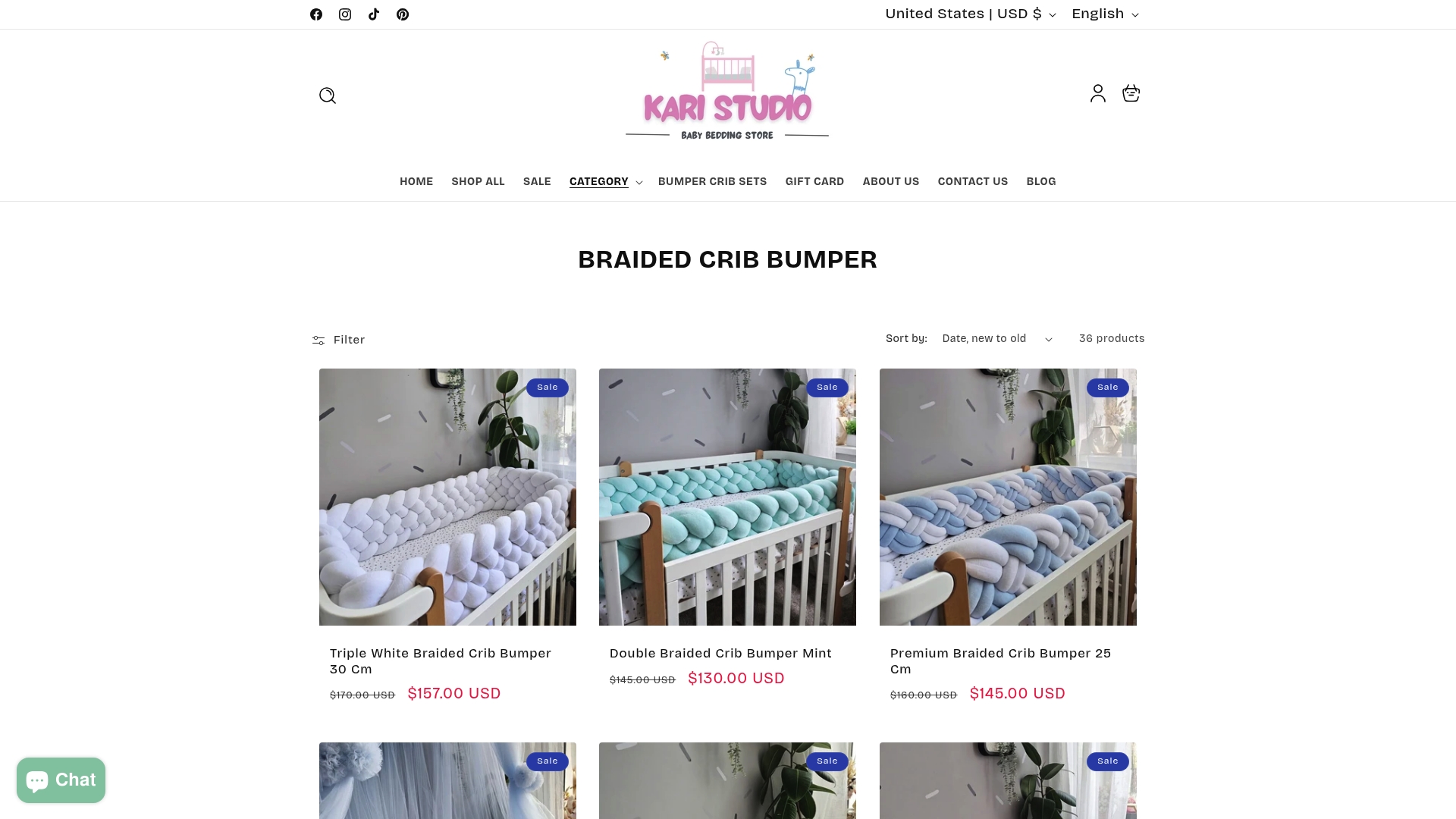
Gestalten Sie Ihr Kinderzimmer schön und funktional zugleich. Kaufen Sie noch heute unsere handgefertigten Nestchen-Sets für Jungen oder Mädchen und finden Sie die perfekte Ergänzung zu Ihren Aufbewahrungslösungen. Besuchen Sie Kari Studio und entdecken Sie, wie einfach es ist, dauerhaft Ordnung zu schaffen und gleichzeitig einen edlen Look zu kreieren. Sorgen Sie für Ruhe und frischen Stil im Babyzimmer, solange der Vorrat reicht.
Häufig gestellte Fragen
Wie beurteile ich den Zustand meiner Babybettwäsche, bevor ich sie einlagere?
Um den Zustand Ihrer Babybettwäsche zu beurteilen, sammeln Sie alle Teile an einem Ort und untersuchen Sie sie auf Abnutzungserscheinungen, Flecken oder Beschädigungen. Achten Sie auf abgenutzte Gummikanten oder kleine Risse und sortieren Sie die Artikel nach Größe, Jahreszeit und Nutzungshäufigkeit.
Was sind die besten Aufbewahrungslösungen für Babybettwäsche?
Zu den besten Aufbewahrungslösungen gehören hochwertige, durchsichtige Kunststoffbehälter mit dicht schließenden Deckeln. Achten Sie auf stapelbare Optionen aus lebensmittelechtem, BPA-freiem Material zum Schutz vor Feuchtigkeit, Staub und Schädlingen. Kleinere Behälter eignen sich ideal für leichte Gegenstände, während größere für sperrigere Bettwäsche geeignet sind.
Wie sollte ich meine Babybettwäsche reinigen, bevor ich sie einlagere?
Lesen Sie vor der Lagerung der Babybettwäsche die Waschhinweise auf den Etiketten des Herstellers. Verwenden Sie milde, babysichere Waschmittel und vermeiden Sie Weichspüler. Waschen Sie die Artikel je nach Material und sorgen Sie für eine gründliche Trocknung, um Schimmelbildung oder Gerüche zu vermeiden.
Welche Bedeutung hat die Beschriftung von Aufbewahrungsbehältern für Babybettwäsche?
Die Beschriftung von Aufbewahrungsbehältern ist entscheidend für einen einfachen Zugriff und eine übersichtliche Organisation. Effektive Etiketten sollten Größenbereiche, Saisonkategorien und Stoffarten enthalten. So finden Sie bestimmte Artikel schnell und sparen Zeit, wenn Sie auf die Bettwäsche zugreifen müssen.
Empfohlen
- So wählen Sie das perfekte Babybettwäscheset als Geschenk zur Geburt – KariStudio
- Vergleich der Reinigungsmethoden für Babybettwäsche: Handwäsche, Maschinenwäsche oder Dampfreinigung - kari-studio.com
- So wählen Sie die richtige Bettwäsche für Ihr Kinderbett aus: Ein umfassender Leitfaden für Eltern
- 7 wichtige Tipps zur Auswahl der besten Babybettwäsche
